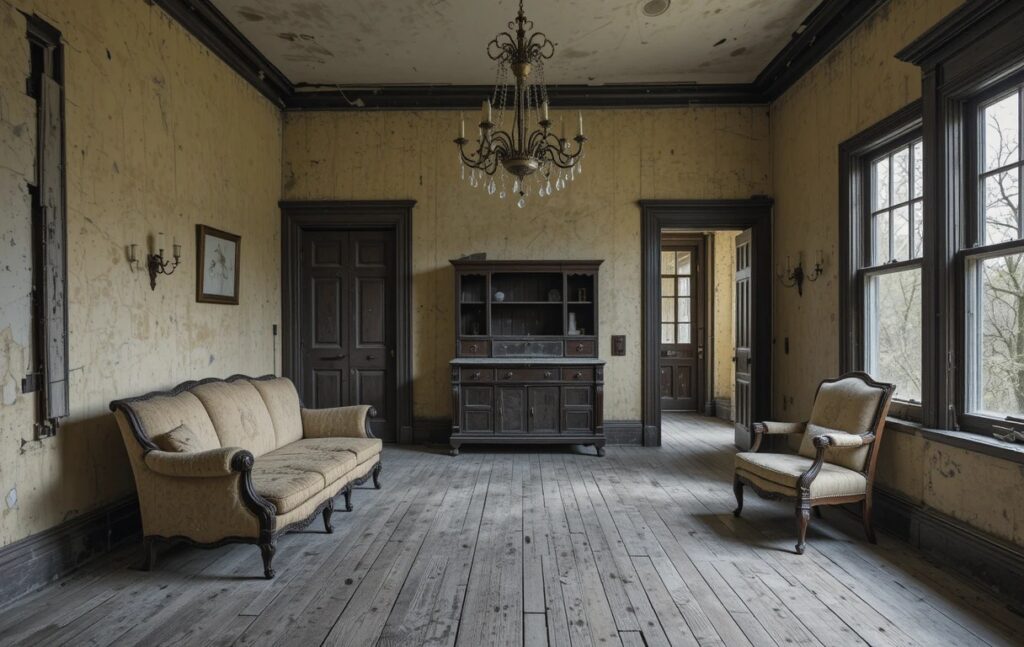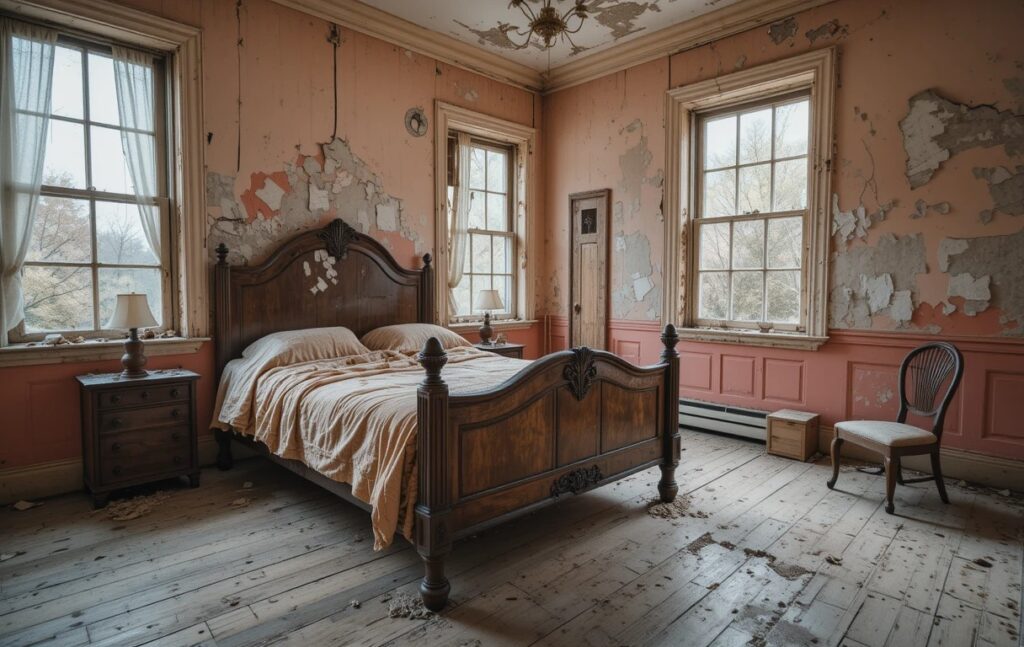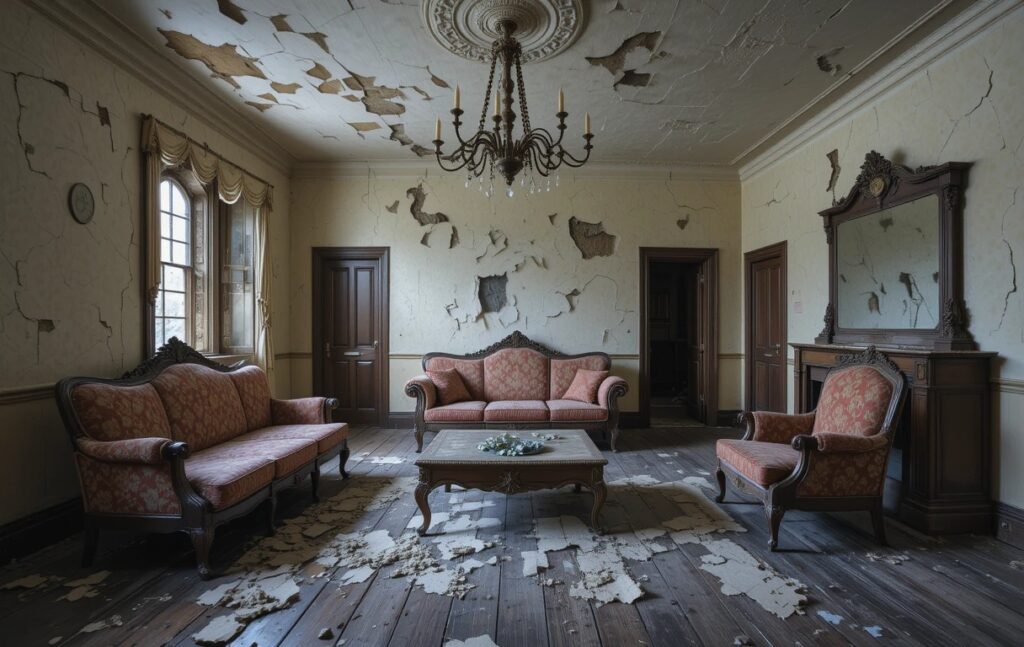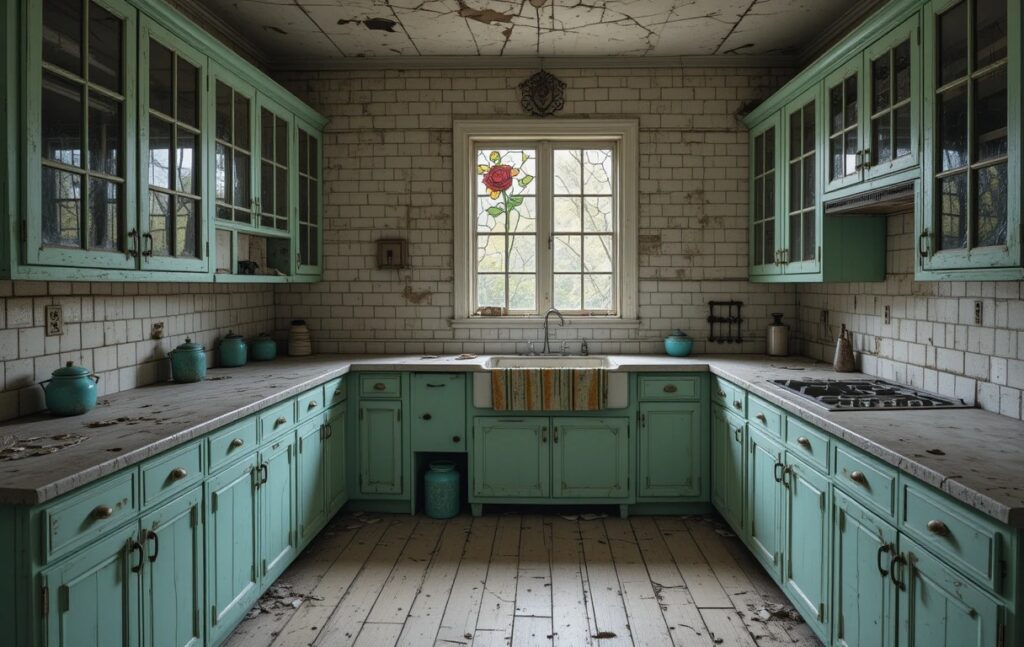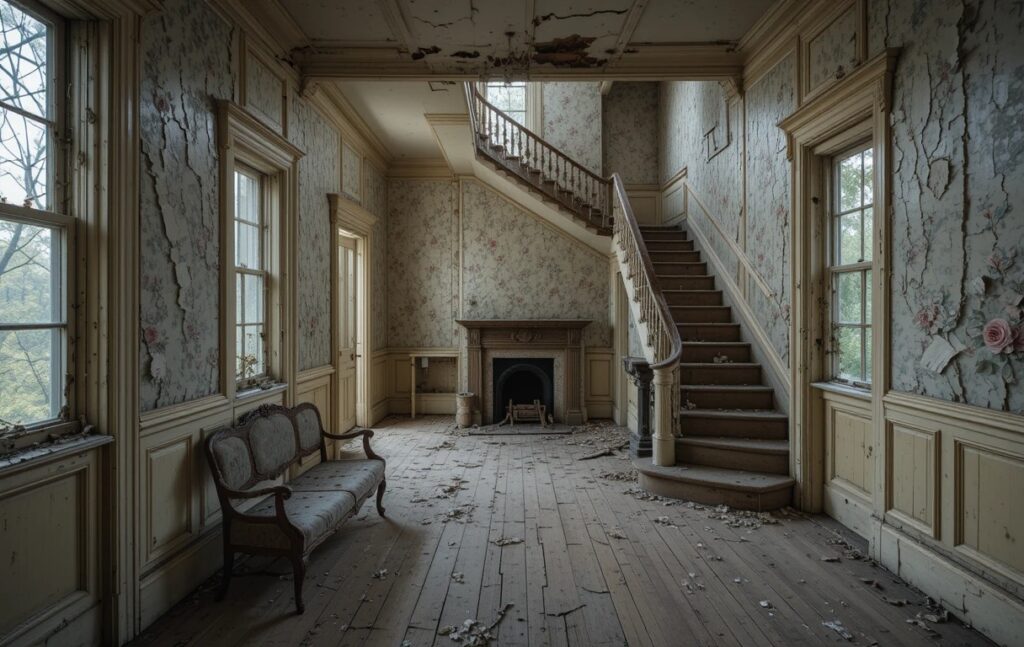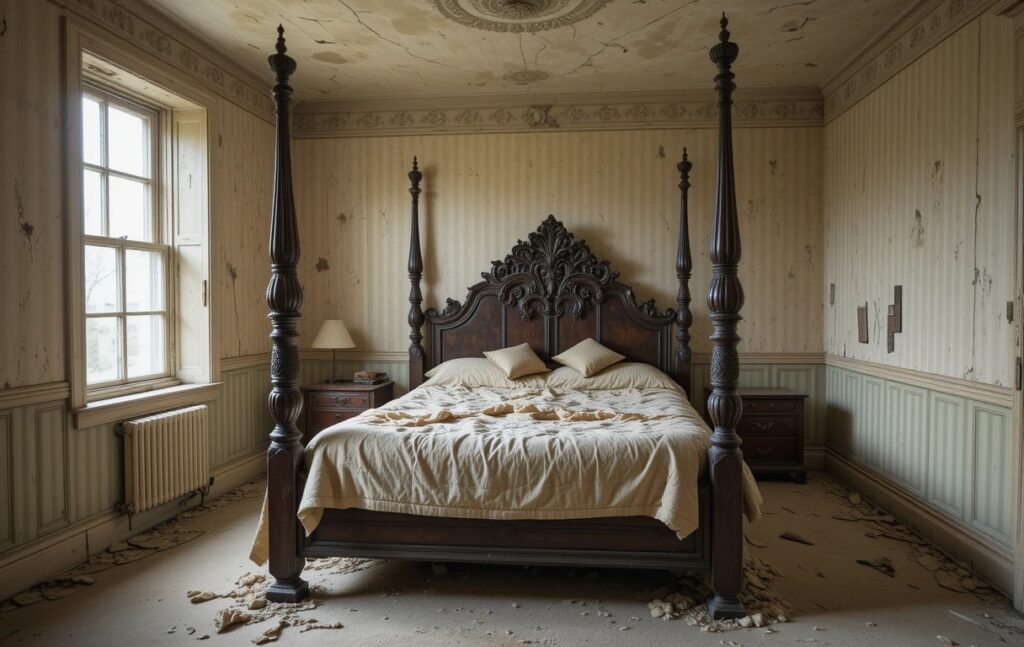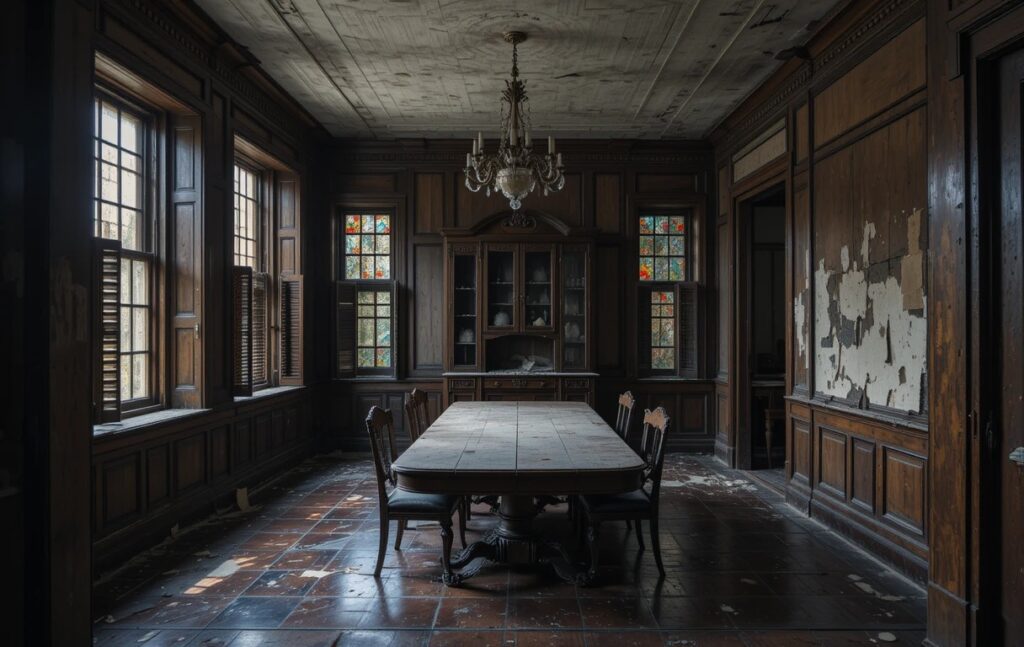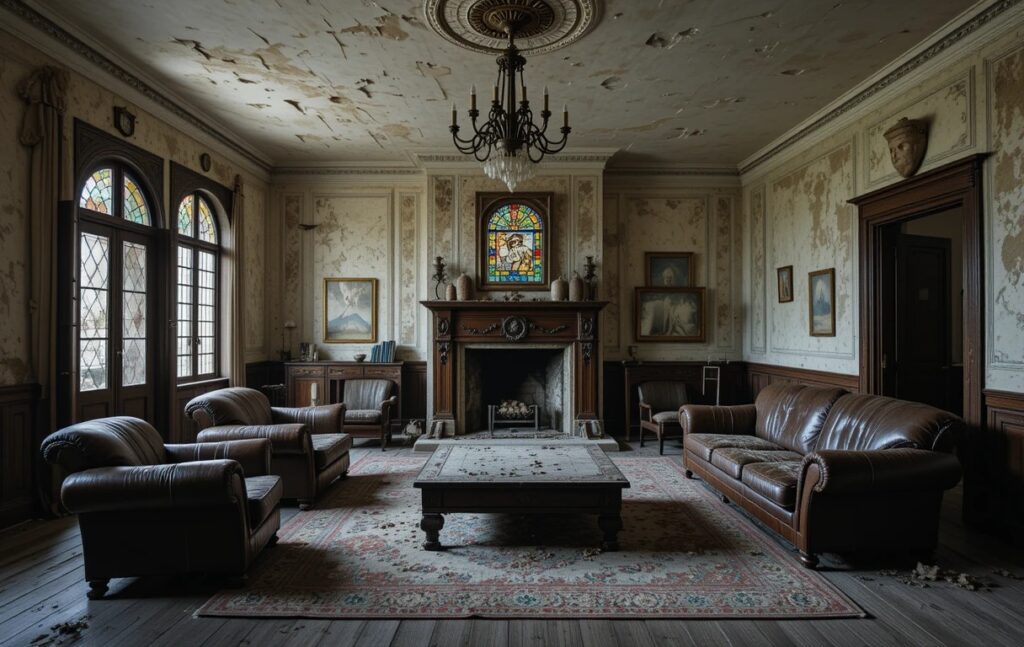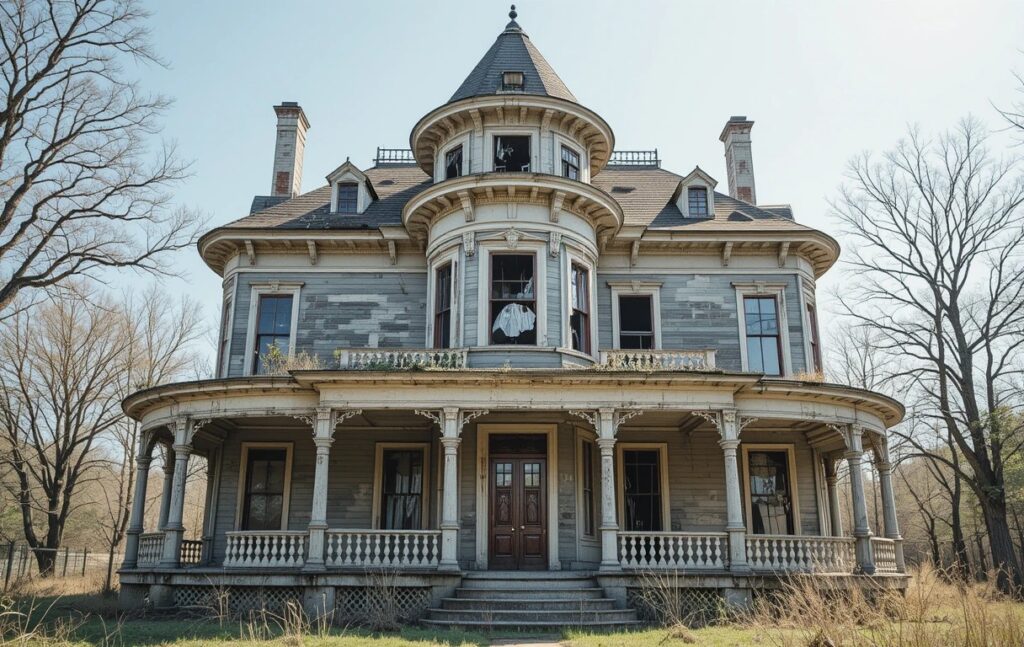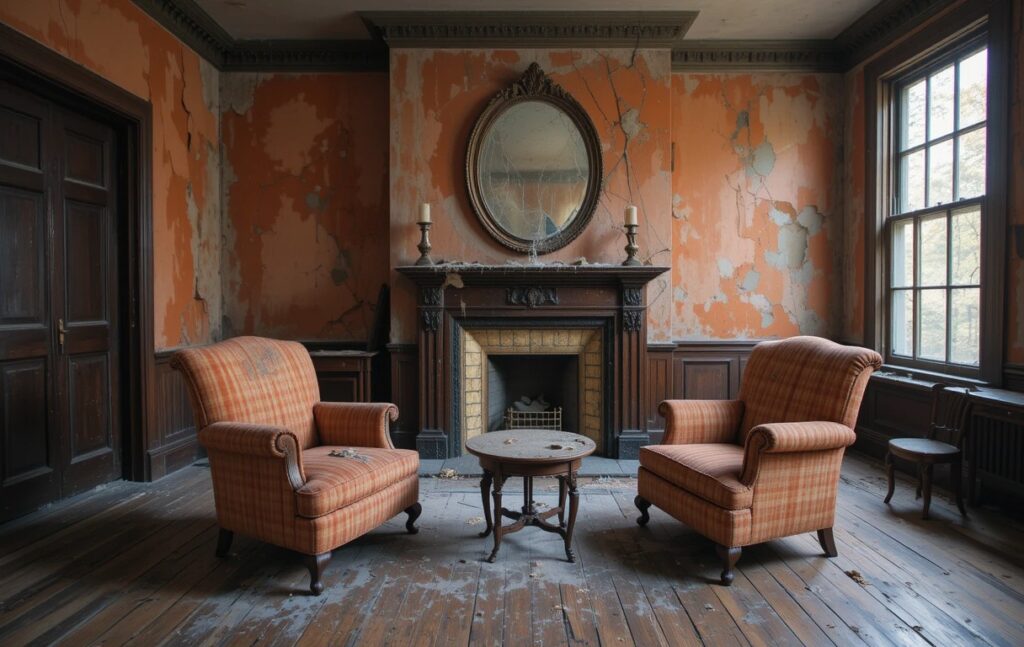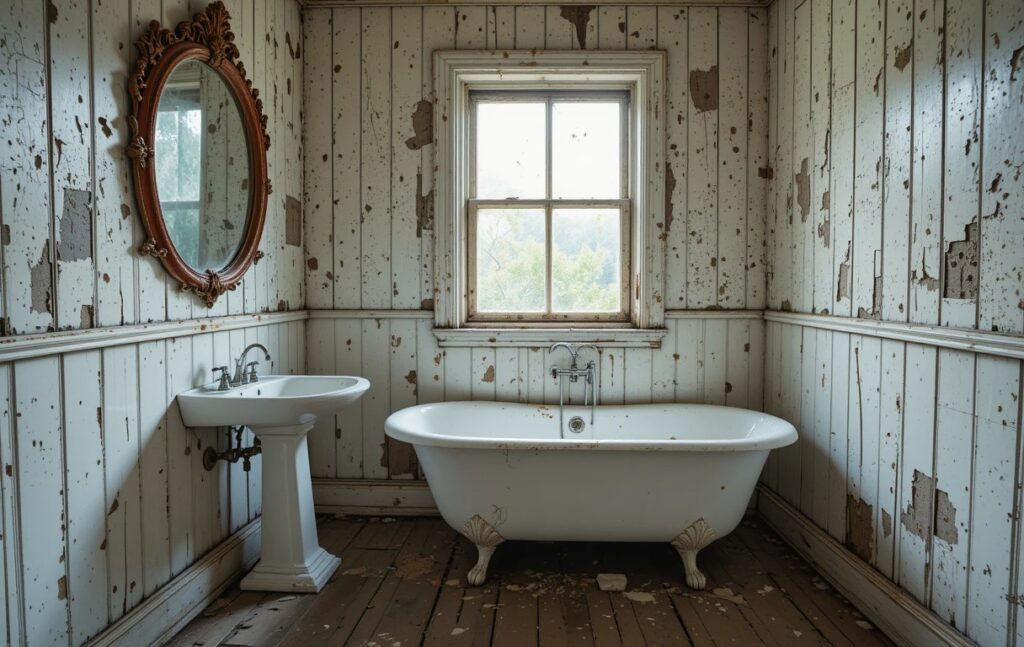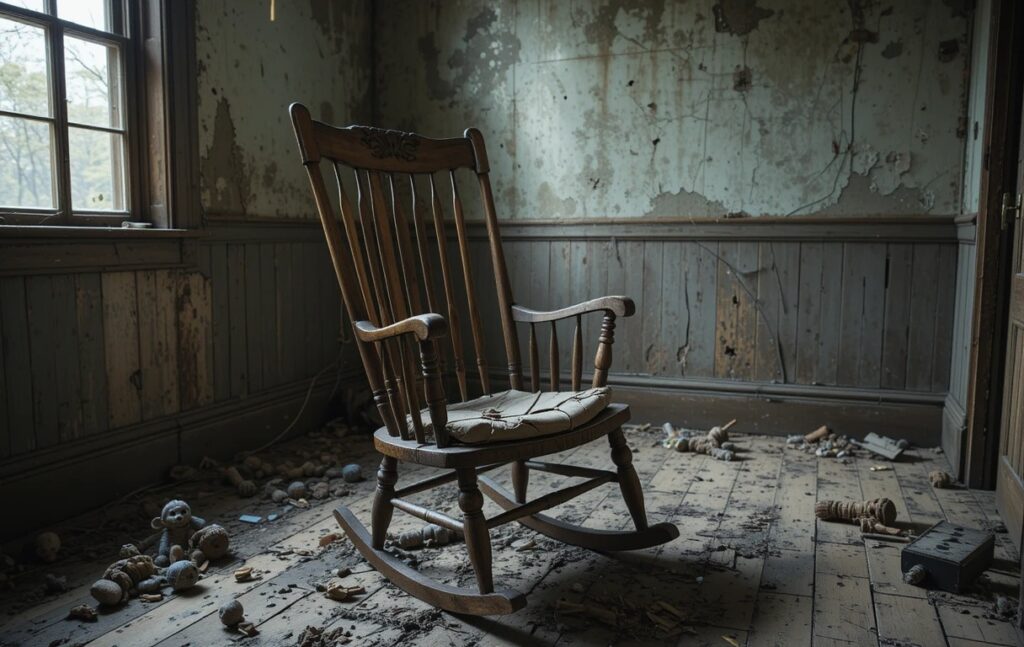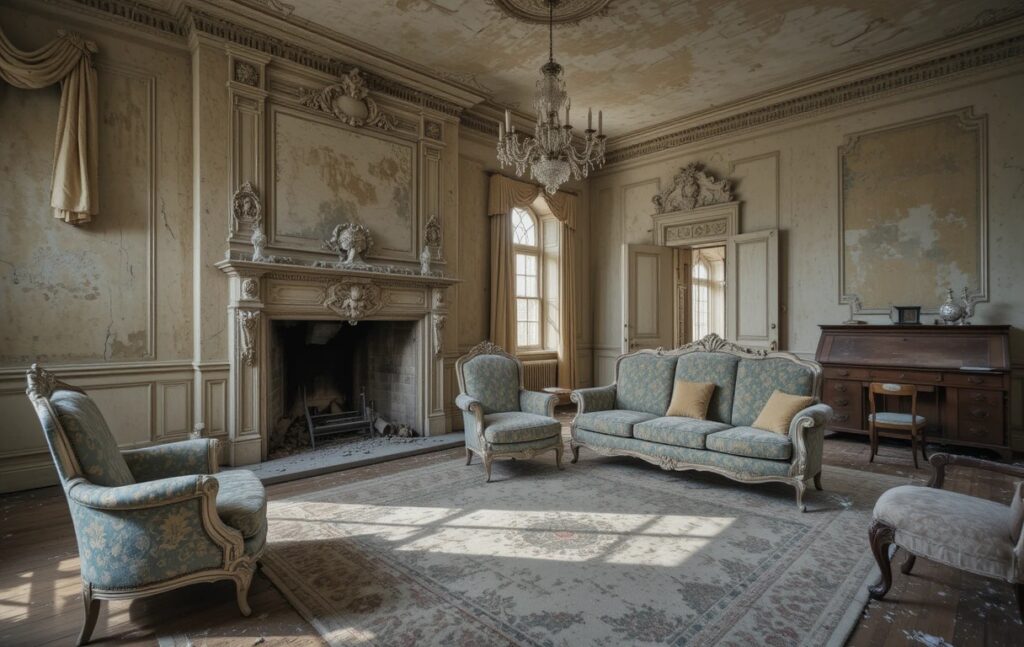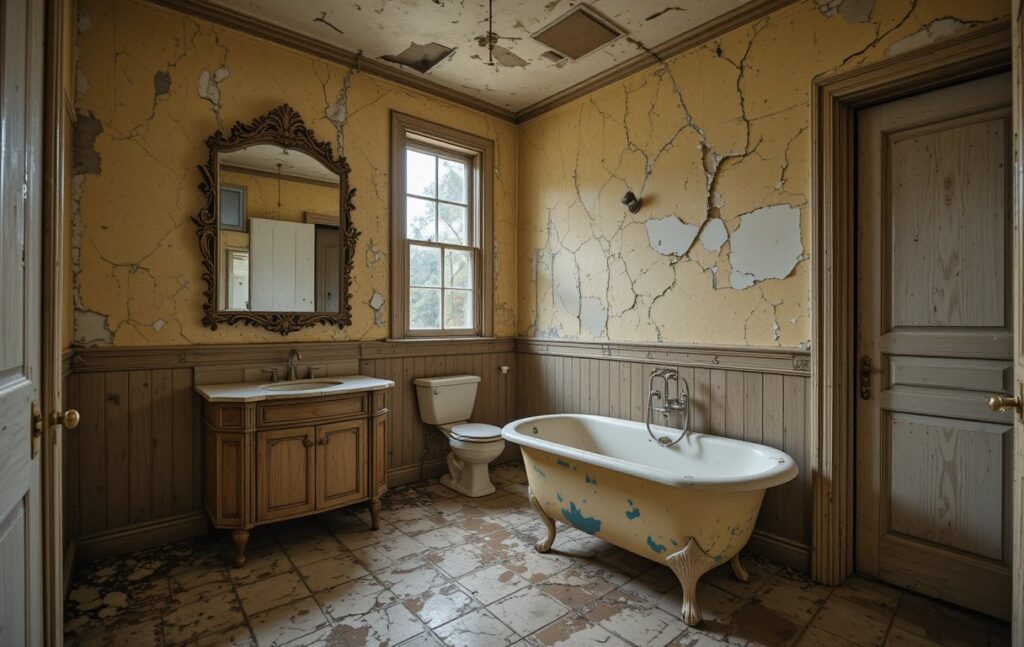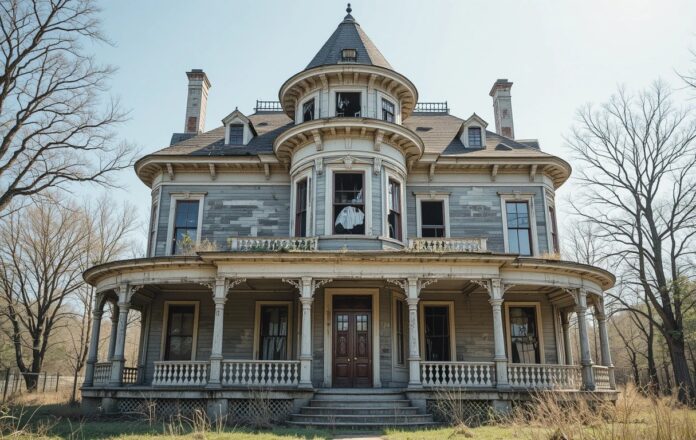In the rolling countryside of America, hidden behind overgrown trees and a crumbling iron gate, stands a mansion that once embodied the dreams of a prosperous family. Built in the late 1800s, its Victorian design told the world of status and refinement. A turret rose proudly above the grounds, while the wraparound porch welcomed visitors to evenings of conversation, music, and charm. Inside, polished floors reflected the glow of chandeliers, and every corner echoed with the laughter of children and the voices of gatherings that once filled its halls.
But prosperity is fleeting. As decades slipped by, the family’s fortune faded. One by one, the heirs moved away, unable—or unwilling—to shoulder the enormous cost of preserving such grandeur. The house was left vulnerable. Storms tore at the shingles, rain seeped through the roof, and the once-bright windows fractured into jagged shards. Paint peeled from the walls, and nature, patient and persistent, began reclaiming what was left. Vines creep across the porch columns. Roots push against the foundation. The mansion is slowly being swallowed by time.
Yet even in ruin, the house commands respect. Neighbors who pass along the quiet country road say there’s a heaviness in the air near the property, as if the walls remember every secret, every celebration, and every heartbreak that occurred within. The silence feels alive—waiting. It is as though the mansion longs for someone to open its doors once more, to sweep out the dust, to ignite the fireplaces, and to restore warmth to its hollow rooms.
For now, it stands as a monument to memory—grand, broken, and hauntingly beautiful.
